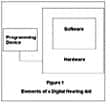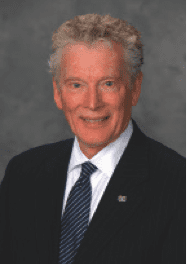
Researchers and clinicians working in the industrial domain compare measures of exposure with well-defined models of hearing loss. This is possible because many sources of noise have similar physical properties, such as spectrum shape, spectrum level, and even peak-to-average intensity (or crest factor) features. Music, in contrast has highly variable spectral shapes, differing spectral levels, varying “on-off” times (between intense and quiet), and is played in every environment from garages to concert halls. Making definitive predictions concerning the damage-risk criteria of music may be a far more difficult task than for industrial noise exposure.
We are still very much in the infancy of this field. We still haven’t reached consensus on basic questions, such as: Is hearing loss as measured on an audiogram the gold standard for musicians? Should we be just as concerned about the prevention of tinnitus and pitch perception problems? If we are truly concerned with auditory function (and not just level), perhaps otoacoustic emissions (OAE) testing or even electrocochleography (EcoG) could be better assessment tools. We need to be concerned about the room acoustics of the various venues that musicians find themselves in and how this can affect music exposure. Musicians, like all people, listen to music outside of their occupation, and we need to understand the risks associated with “portable music,” such as CD players and MP3 players. And, unlike speech, we still don’t have a good handle on the perceptual requirements of a person listening to (or playing) music.
The many approaches to working with musicians, and in some cases the solutions, have been ingenious. Customized hearing protection that attenuates the music level while still maintaining the spectral content has been developed. Music monitoring systems (eg, ear monitors) are quickly experiencing widespread use. These devices allow the musician to hear the music adequately at a much lower intensity level than with the old-style wedge stage monitors. And hearing aid circuitry is available that is close to ideal for the perceptual and listening requirements of audiophiles.
This issue of The Hearing Review is an overview of what we know and do not know about the hearing care and treatment of musicians and audiophiles. It has been designed to serve as a source for more reading or as a stand-alone statement of what can be done when a musician walks into your clinic. I would argue that the material in this issue delineates the minimum standard of care for those in the performing arts.
The following articles are written by people who have worked with musicians and have dealt with hearing loss prevention for those in the performing arts. The first part of this special issue concerns the practical aspects of examining and fitting hearing aids for musicians, as well as a short introduction to room acoustics. Audiologist and second-rate clarinet player Marshall Chasin addresses the optimal electroacoustic parameters for listening to music via hearing aids; acoustic engineer and guitarist Bill Gastmeier shares insights into his work in designing rooms for musicians and audiences; and otolaryngologist and drummer Kenneth Einhorn writes on the medical aspects of music induced hearing loss.
The second group of articles concerns the topics of hearing conservation, portable listening systems, and the unique perceptual characteristics of music. Kris Chesky, a musician and director of research and education at the University of North Texas, reports on an exciting new hearing conservation program for music schools; research audiologist Patty Niquette writes on the use of earplugs for musicians; audiologist Michael Santucci shares his knowledge about onstage in-ear monitors; audiologist Brian Fligor provides information on the hot topic of portable music and its risk to hearing health; researcher Frank Russo poses ideas about perceptual considerations in designing and fitting hearing aids; and audiologist Edie Gibson offers advice for cochlear implant users who like to “plug into” portable music players.
Any slicing of the editorial knife is not without its problems. The selection of articles for this issue is, in itself, an assumption of what is relevant and important. When dealing with those in the performing arts we are always learning. What I thought was important 20 years ago is certainly different than what I think is important today.
Having said this, the following articles are intended to be something that can be read from start-to-finish, and hopefully, will provide the reader with at least a glimmer of the issues, problems, and solutions in this exciting area. There are many excellent Web sites and publications on this topic (many of which are cited here or within the authors’ Web pages), and the reader is encouraged to pursue these resources and to contact any of the authors for more information.

|




